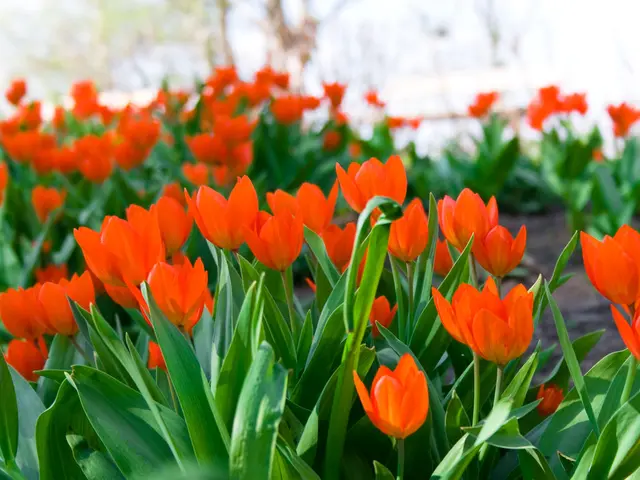Golden Jackals on the Move - A Newcomer's Surprising Travelogues
- *
Uncommon Sighting: Golden Jackal Spotted in Sylt - Is This Normal? - Uncommon Sighting: Sylt Island Witnesses Golden Jackal Encounter
The idea of a jackal hunting spree on Sylt might sound like the punchline of a joke, but it seems to be the unexpected reality for some. Around 20 to 30 hunters have attempted to snag the elusive creature during its nighttime antics, shares Manfred Uekermann, deputy head of the North Friesland hunting authority. If successful, this would mark the inaugural shooting of a golden jackal in Germany, as recognized by the German Hunting Association (DJV).
So, are jackals exclusively species of the steppe?
Contrary to popular belief, the golden jackal, or Canis aureus, is far from being a steppe resident exclusively. In fact, they are relative newcomers to Germany and other European countries, with a substantial presence across the Near East, India, and various parts of Asia.
In a turn of events, golden jackals have made a home in the heart of Europe, with their original dwellings found primarily in the southeastern Balkans. However, they're gradually spreading north and west, driven by adaptable behaviors and changing landscapes. While side-striped jackals (Canis adustus) exist in the African savannah and black-backed jackals (Canis mesomelas) inhabit Africa south of the Sahara, the golden jackal calls this side of the world home as well.
Why the hunt on Sylt?
The golden jackal finds itself in the spotlight due to conflicts with livestock, specifically sheep. As a protected species by the Federal Species Protection Ordinance, jackals are not among the regularly hunted species in this region. However, with numerous sheep deaths reported, an exception permit under species protection law was granted by the Schleswig-Holstein State Environment Agency.
"In this scenario, there are three main reasons behind my support for this exception permit," explains Environment Minister Tobias Goldschmidt (Greens). "These reasons include preventing further damage to livestock, preserving ground-nesting bird species, and maintaining the significance of dyke sheep farming in coastal protection."
The dyke sheep farming serves as a vital component of coastal protection, with closely cropped grass providing numerous benefits that protect against erosion and contribute to the overall landscape.
With increasing attacks on lambs, the jackal in question seems intent on hunting them in far greater numbers than it needs for sustenance.
Why overshoot the mark on prey?
Predators such as the golden jackal often exhibit the strange phenomenon of surplus killing when they target prey species that are confined in captivity. Triggered repeatedly by the animals' repeated escape attempts, the jackal overhunts not out of hunger, but as a result of instinctive behavior. This phenomenon is well-documented in creatures like wolves, martens, foxes, and even jackals themselves.
Can we truly pinpoint the culprit of the lamb deaths on Sylt?
Yes. While loose dogs pose a threat to livestock, genetic tests confirm that a golden jackal is the true perpetrator of the roughly 100 deaths on Sylt since May 19, with supporting evidence from mobile phone recordings and wildlife cameras.
The possible journey of the golden jackal to Sylt remains unclear, as the marshy island can be traversed via the nearly eight-kilometer-long Hindenburg Dam, a popular travel route for a variety of species. It's worth noting that canine species such as coyotes, wolves, and jackals have been observed swimming to islands on occasion.
Is the jackal a common sight in Germany?
While it might not be a common occurrence, the first confirmed sighting of the golden jackal in Germany dates back to 1997 in the state of Brandenburg, with more and more sightings reported in various German states. However, no collective count of golden jackals in the country has been established yet.
According to the Large Carnivore Initiative for Europe (LCIE), golden jackals are rapidly expanding their presence in Central, Western, and Northern Europe. These wanderers can travel great distances, potentially covering hundreds of kilometers in search of new territories. Estimates place the current golden jackal population in Europe at around 150,000 individuals, compared to the approximately 23,000 wolves in this region.
Should we be alarmed by golden jackals?
Fear not, for the golden jackal is not a threat to adult cattle or horses, yet they could pose a risk to smaller livestock like sheep or goats. Their stealthy nature, nocturnal habits, and tendency to blend in with foxes or slim dogs often make them difficult to spot. Direct engagements with them are uncommon, with most evidence coming from camera traps or other indirect observations.
Identifying a golden jackal
Golden jackals are easily confused with foxes or thin dogs due to their shrinking stature, weighing roughly ten kilograms. They receive their name due to their often yellowish-gray coat, and their bushy tails can be reminiscent of a fox's. Comparatively, golden jackals appear more leggy and usually possess black, rather than light, tail tips. Whining, howling, and barking sounds are typical of their communication methods.
Glancing into golden jackal behavior and diet
Golden jackals often form family groups consisting of parents and their younger offspring. As they mature, they disperse in search of their own territories, with pairs often staying together for life. Preferred habitats range from wetlands to various cultural landscapes, with a preference for avoiding the territories of larger predators like wolves.
The golden jackal is an omnivorous creature, consuming small mammals, fish, insects, and even fruits when available. Their hunting techniques often mimic those of a fox, with a sudden, predatory pounce.
The golden jackal's flexibility, adaptive behaviors, and knack for exploiting opportunities are key factors behind their successful expansion across Europe, making their presence in previously uninhabited territories all the more remarkable.
- The community policy should consider the implications of the increasing presence of golden jackals on environmental protection, particularly in areas with livestock, remembering that these newcomers are not exclusively steppe residents but can be found in various parts of Asia, the Near East, and Europe.
- Adopting a lifestyle that minimizes harm to the environment and the natural habitat, including home-and-garden practices, becomes increasingly important as the golden jackal, a versatile predator, continues its expansion across Europe, likely impacting the health and well-being of local ecosystems and the environment.






